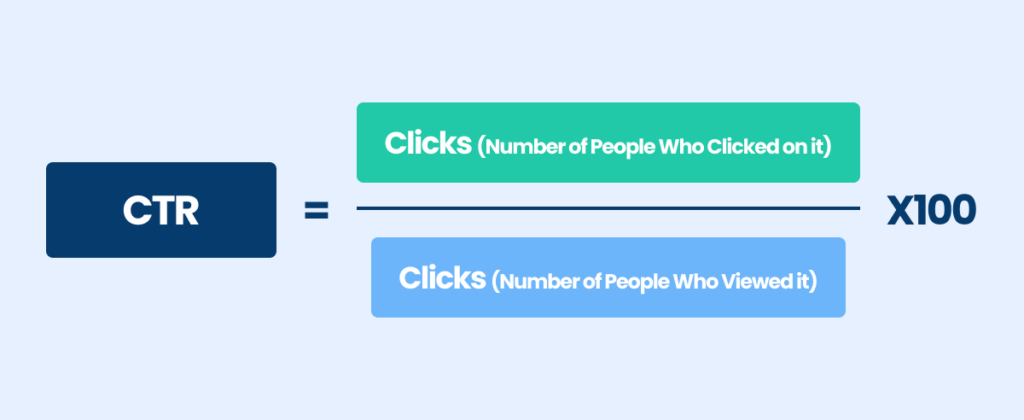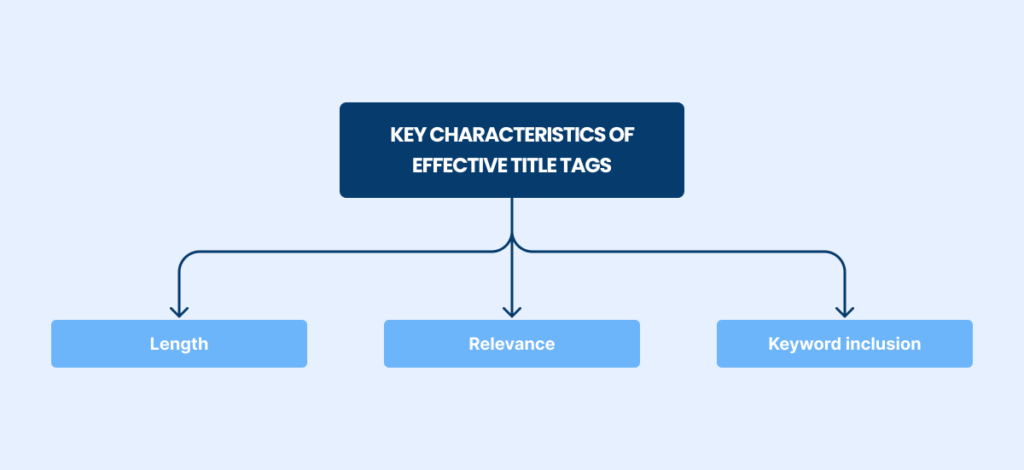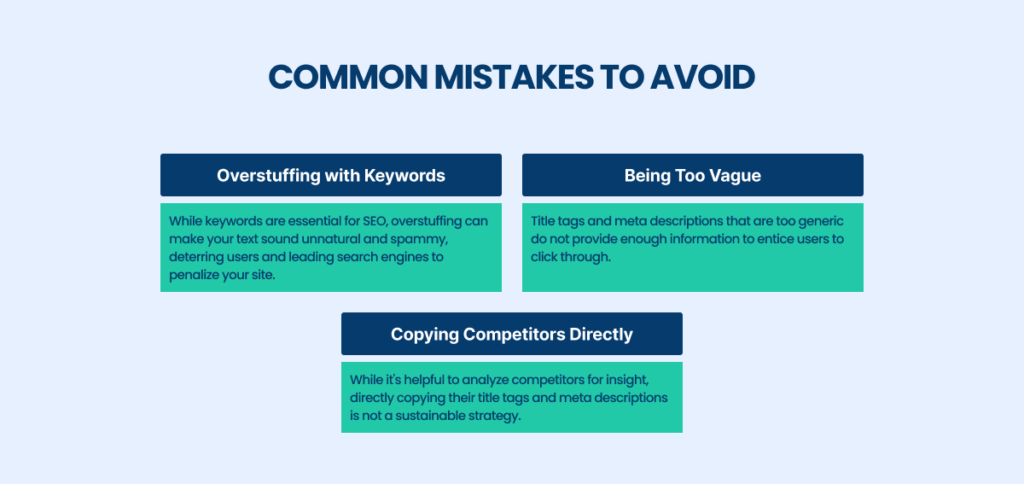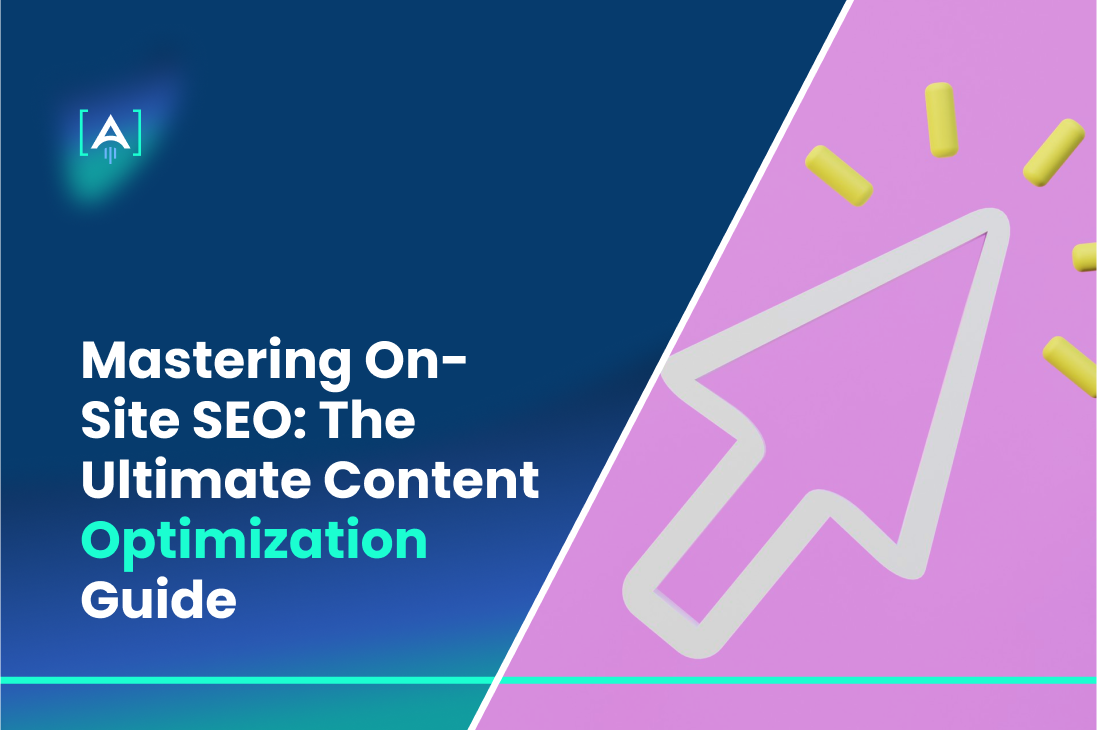When browsing search results, what makes you click on a particular link?
Often, compelling title tags and engaging meta descriptions grab your attention.
These elements are not just text snippets but powerful tools that can dramatically increase your website’s click-through rates (CTRs).
Crafting perfect title tags and meta descriptions is both an art and a science, providing a brief yet potent preview of what potential visitors can expect on your webpage.

An SEO agency is responsible for optimizing a client’s digital content and website structure to enhance visibility and improve rankings on search engines by implementing tailored SEO strategies to drive targeted traffic and increase conversion rates.
In this guide, we’ll explore how to create irresistible title tags and meta descriptions that captivate and convert, boosting your visibility and driving more traffic to your site.
Understanding Title Tags and Meta Descriptions
Understanding the crucial elements of a title tag and meta description is essential when optimizing a website for search engines and improving user experience.
Source: Azaryan Growth Agency
These components are fundamental in any SEO strategy, serving as the first point of interaction between your site and potential visitors on search engine results pages (SERPs).
What Are Title Tags and Meta Descriptions?
Title tags and meta descriptions play crucial roles in both SEO and enhancing a website’s overall user experience. A title tag, which is an HTML component, defines the title of a web page.
It is shown on search engine results pages as the clickable headline for a given result and is crucial for usability, SEO, and social sharing. A page’s title tag should accurately and concisely describe its content.
A meta description, or meta description tag, on the other hand, is a brief summary of a page’s content that also appears under the title in search results. While not a clear ranking factor for search engines, a well-written meta description can influence the likelihood of a user clicking on a result. It provides a concise summary that captivates the searcher’s interest, prompting them to click through to the website.
Effective meta descriptions should typically be between 150-160 characters to guarantee they are displayed fully in SERPs without being cut off.
Both elements are crucial in reducing SEO keyword cannibalization. They help distinguish between similar content on different pages by clearly defining each page’s focus.
How Do They Affect Click-Through Rates?
Title tags and meta descriptions significantly impact your visibility in search results and, consequently, your click-through rates (CTRs). These elements function as advertising copy, pulling in users from SERPs.
Source: CXL
Title tags and meta descriptions are introduced as concise previews of a webpage’s content, directly influencing a user’s decision to visit the site.
Title tags are designed to grab attention, and this is where keyword research SEO plays a critical role.
By integrating relevant keywords determined through keyword research SEO and competitor keyword research, your title tags can accurately target user queries, match user intent, and improve your visibility.
Meta descriptions, while not directly tied to Google’s ranking algorithms, influence user engagement by providing a clear expectation of what the webpage contains. When you write meta descriptions that are engaging and relevant, they can effectively improve click-through rates, especially if they include a call-to-action or a summary that resonates with the search query.
Moreover, it is crucial to avoid duplicate meta descriptions; unique descriptions for each page prevent them from blending into the background in a sea of similar-looking search results.
Crafting unique and appealing meta descriptions for each page encourages higher engagement rates, as each description is tailored to the page’s specific content. This further enhances the effectiveness of your SEO strategy.
Crafting the Perfect Title Tags
Creating the perfect title tags is a critical aspect of on-page SEO. They improve user experience by clearly signaling the webpage’s content and have a crucial role in optimizing your site for enhanced visibility and ranking on search engine results pages (SERPs).
Key Characteristics of Effective Title Tags
Length, relevance, and keyword inclusion are essential elements that contribute to the effectiveness of a title tag.

Here’s how you can optimize these aspects to create compelling title tags:
1. Length: The length of a title tag is crucial for ensuring it is fully displayed in SERPs without being cut off. The optimal length is typically between 50 and 60 characters.
This range is also ideal for mobile SEO, considering the limited display space on mobile devices. Keeping the title concise yet descriptive prevents truncation and ensures that users can quickly understand what the page is about from the SERP.
2. Relevance: A title tag must accurately reflect the page’s content. This includes a deep understanding of search intent optimization.
The title should match the language and expectations of your target audience, addressing their specific needs or questions. This relevance helps with user engagement and aligns with search engine algorithms prioritizing content relevance to user queries.
3. Keyword Inclusion: Incorporating the right keywords into your title tag is essential for SEO. Keyword research should identify terms that are highly relevant to your page’s content and popular within user searches. However, it’s crucial to practice white hat SEO techniques by naturally integrating these keywords without stuffing.
The primary keyword should ideally be placed towards the beginning of the title tag to increase its visibility and impact.
Enhancing Title Tags with Additional SERP Features
To enhance your title tags further, consider how they interact with other SERP features. For instance, if your page contains structured data, such as ratings or prices, the title tag should complement this information, not repeat it. This synergy creates a more compelling SERP snippet that can increase the chances of a click.
Mobile SEO Considerations
With the increasing prevalence of mobile search, your title tags should also perform well on smaller screens. This includes keeping them within the recommended character limit and ensuring they contain the most impactful words at the beginning to capture attention quickly.
On-Page SEO vs. Off-Page SEO
While title tags are a critical component of on-page SEO, they should be supported by off-page SEO strategies like building backlinks and social media marketing. A well-rounded SEO strategy ensures optimized title tags contribute to a stronger online presence.
Example of a Good Title Tag
A good title tag for a page about writing meta descriptions might be: “How to Write Meta Descriptions: Tips for SEO & Engagement.” This title is within the optimal length, directly relevant to the page content, includes keywords like “write meta descriptions” and “SEO,” and hints at providing practical advice that aligns well with user intent.
Common Mistakes to Avoid
When crafting a title tag and meta description, it’s easy to fall into certain common pitfalls that can undermine your SEO efforts and negatively impact user experience.

Understanding these problems can help you avoid them and optimize your on-site SEO more effectively. Each title and description should clearly articulate what the page is about and how it benefits the user, leveraging UX SEO principles to enhance clarity and engagement.
Source: Data analysis and market share report
Mastering Meta Descriptions
Crafting a compelling meta description is a critical aspect of on-site SEO.
A well-executed meta description is an advertisement for your webpage, enhancing its visibility in search results and encouraging users to click through to your site.
Essentials of a Compelling Meta Description
Length: The ideal meta description length is 150 to 160 characters. Staying within this limit ensures that your entire description is visible in search results without being cut off, providing a full snapshot of what the page offers. This conciseness requires precise language that communicates the core message efficiently.
Call-to-Action (CTA): Including a CTA within your meta description can significantly increase click-through rates.
A compelling CTA such as “Learn more,” “Get started today,” or “Discover why” invites engagement and directs users on what to do next. This direct approach taps into the user’s intent and encourages them to interact further with your content.
The Art of Summarizing Page Content: A meta description should effectively summarize the web page’s content while highlighting its value. This involves distilling the page’s essence into a few compelling sentences.
This summary should not only accurately reflect the content but also align with the target keyword, title tag, and meta-description strategy to reinforce relevance.
Techniques to Increase Relevance and Attraction
Using Active Voice: Writing your meta descriptions in an active voice makes them more engaging and dynamic. Active voice contributes to clearer and more direct sentences, making the benefits and offers on your page more compelling.
For example, instead of saying, “Discounts are offered,” say, “Get 20% off today!”
Including Targeted Offers: Specific offers like discounts, free trials, or exclusive downloads can effectively attract users. These offers should be directly relevant to the target keywords and your audience’s interests.
For instance, a software tool’s meta description might include, “Start your free trial now to streamline your workflow!”
Emotional Hooks: Incorporating emotional hooks into your meta descriptions can greatly enhance their impact. These hooks should resonate with readers’ desires, fears, or curiosity. Using emotive language can help to create a connection and make the message more memorable.
For example, a travel site might use “Embark on the adventure of a lifetime” to evoke excitement and wanderlust.
Examples of Good Meta Descriptions:
- For a marketing tool: “Boost your sales with our AI-powered analytics tool. Start your free trial today and transform your marketing strategy!”
- For a health blog: “Discover proven strategies to improve your mental health. Read our expert tips and start feeling better today!”
- For an e-commerce site: “Shop the latest summer dresses at unbeatable prices. Exclusive 20% discount this week only!”
- For a professional service: “Maximize your tax savings with our certified accountants. Schedule a free consultation now!”
Each of these examples shows how a good meta description effectively uses length, a strong call-to-action, and emotional language to attract and engage potential visitors.
By mastering these elements, you can create unique meta descriptions that enhance UX SEO and on-site SEO and boost more targeted traffic to your site. Through careful crafting and strategic use of language, meta descriptions become a powerful tool in your SEO arsenal, helping to convert searchers into visitors and customers.
Integration of SEO Best Practices
Integrating SEO best practices into your website’s overall strategy is not just about improving visibility but also about ensuring a coherent and user-centric approach to digital marketing.
Title tags and meta descriptions are crucial elements in this integration, serving as primary touchpoints within the user’s search experience. Understanding how these elements match into broader SEO and content strategies can significantly enhance your site’s effectiveness in attracting and converting traffic.
Aligning Title Tags and Meta Descriptions with Overall SEO Strategy
Title tag and meta description play pivotal roles in your SEO and content marketing strategies.
These elements are often the first encounter potential visitors have with your brand through search engines, and they influence both click-through rates and the user’s initial impression of your site.
- Strategic Alignment with Content
Guaranting that your title tags and meta descriptions accurately reflect the content of the page is crucial. This alignment assists search engines understand the relevance of your content to specific search queries, improving your rankings. Moreover, it ensures that users who click through do so with accurate expectations, thereby reducing bounce rates and improving user satisfaction.
- Consistency Across Platforms
It’s essential that your title tags and meta descriptions remain consistent across all platforms where your content might appear. This includes social media, email marketing, and third-party blogs. Consistency aims to build brand recognition and trust, which are critical for long-term SEO success.
Integration with Technical SEO
Title tags and meta descriptions should also be integrated with technical SEO elements like schema markup, canonical tags, and meta robots tags. This integration helps to enhance the clarity of your site’s structure for search engines and can lead to better indexing and higher rankings.
User Engagement and Brand Messaging
Source: Influencer Marketing Hub
Both title tags and meta descriptions should convey your brand’s voice and appeal to your target audience’s emotions and interests. Crafting these elements to resonate with your audience can increase engagement rates and foster brand loyalty.
Using Keyword Research to Optimize Tags and Descriptions
Effective keyword research is the backbone of any SEO strategy.
The insights gained from this research guide the optimization of your title and meta description, ensuring they are discovered by the right audience at the right time.
Incorporating Primary Keywords
Your primary keywords should be directly relevant to the page’s content and have a high search volume. These keywords should be strategically placed in your title tags and at the beginning of your meta descriptions. For example, a primary keyword for a digital marketing service page might be “online marketing solutions,” and the title tag could be “Explore Top Online Marketing Solutions | BrandName.”
Utilizing Secondary Keywords
Secondary keywords, often related but less competitive than primary ones, should be used to support the primary keywords in your meta descriptions. These keywords can help capture additional traffic from more specific queries and increase the relevance of your pages to targeted search intents. For instance, secondary keywords like “customized marketing services” and “affordable marketing plans” can be woven into the meta description.
Avoiding Keyword Cannibalization
Keyword cannibalization happens when multiple pages target the same or similar keywords, confusing search engines and diluting your SEO efforts. To prevent this, ensure that each page has a unique set of target keywords reflected in its title tag and meta description. This uniqueness helps to clearly define the page’s content and purpose, improving individual page rankings.
Long-Tail Keywords
Integrating long-tail keywords into your meta descriptions can be beneficial, especially for capturing more specific search queries. These keywords are usually more conversational and can match well with voice searches and mobile queries, enhancing your visibility in these growing segments.
Partner with [A] Growth Agency for Boosting Your Click-Through Rates
The better your title tag and meta description, the higher your click-through rate (CTR) – which means how many people who see your listing click through to visit your website.
[A] Growth Agency will craft all the necessary elements to be clear, engaging, and relevant to the content of your page. Moreover, you enhance your visibility on search engine results pages and increase the likelihood that users will choose to click through to your site.
Our experienced team specializes in turning entrepreneurial dreams into reality with effective, tailored growth strategies. Every business we work with is a partner. We’re invested in their success as deeply as our own, fostering a mutual growth journey.
We ensure that the strategies we develop are practical and powerfully effective, driving measurable results and sustainable growth. Together, we navigate the complexities of the market, transforming challenges into stepping stones for success.

